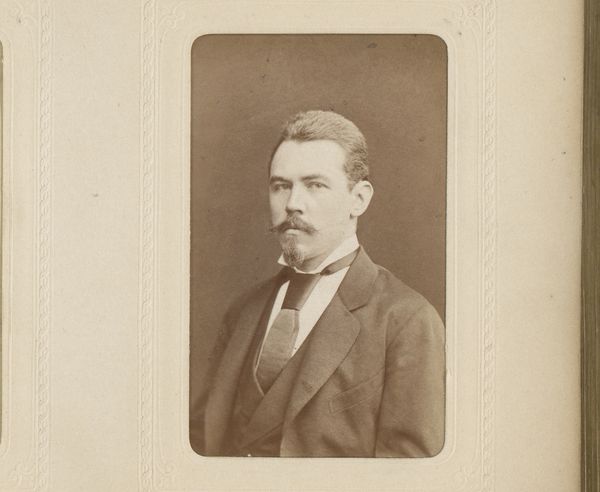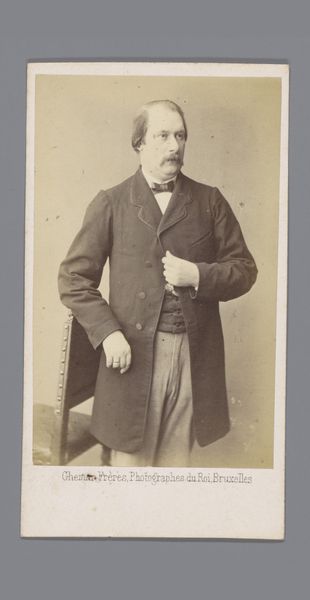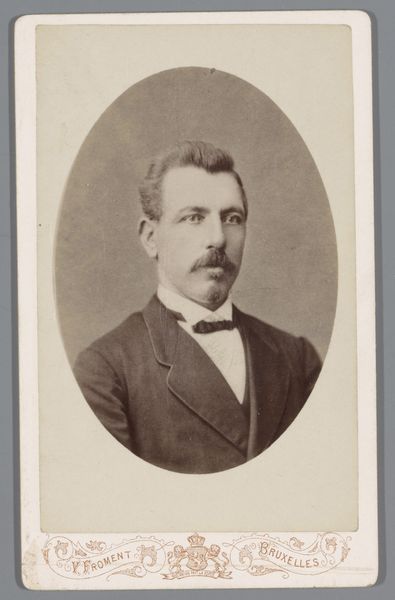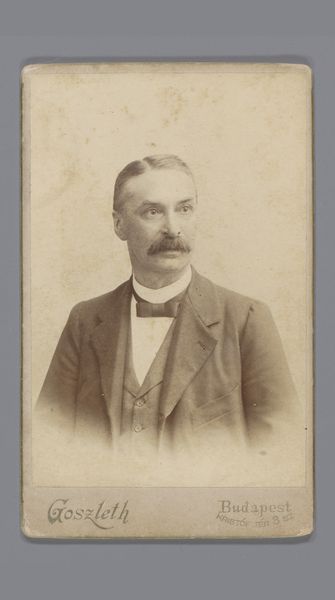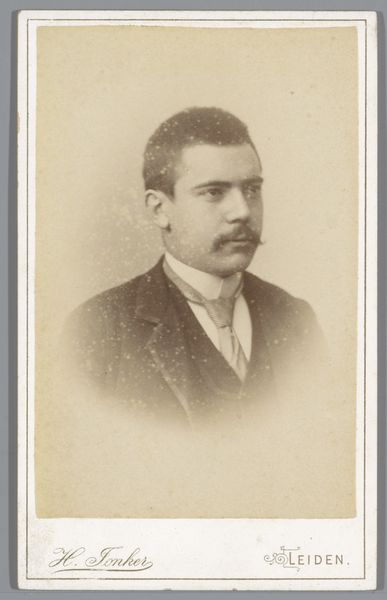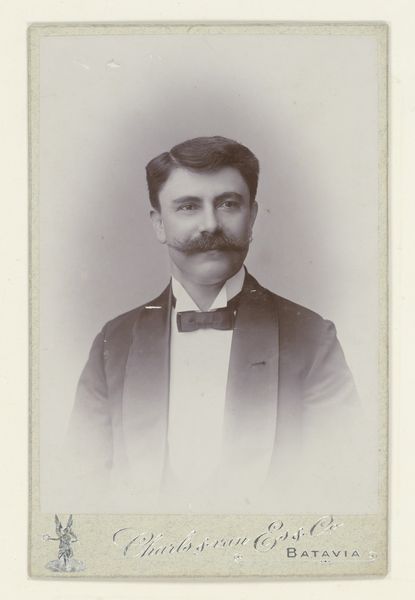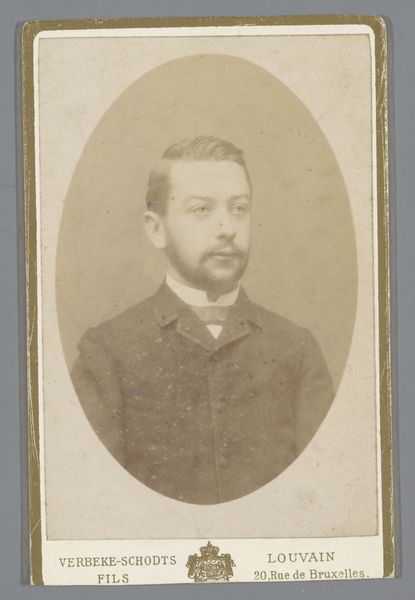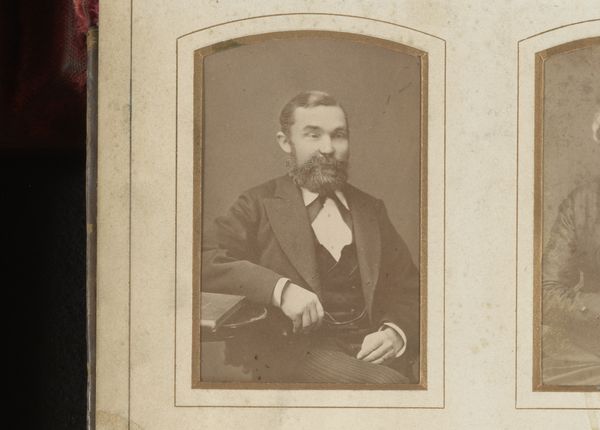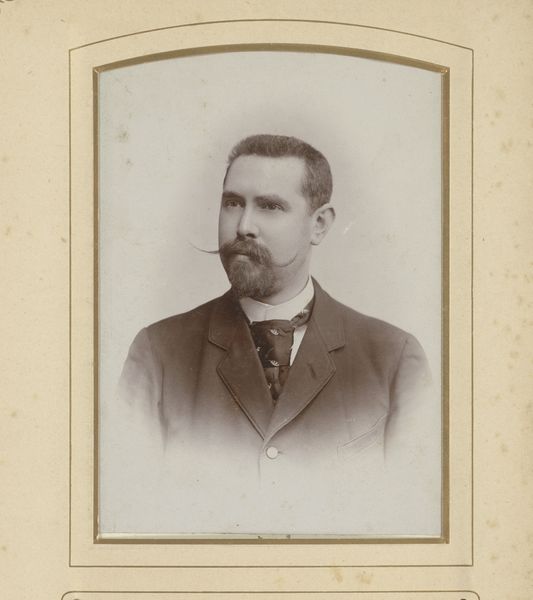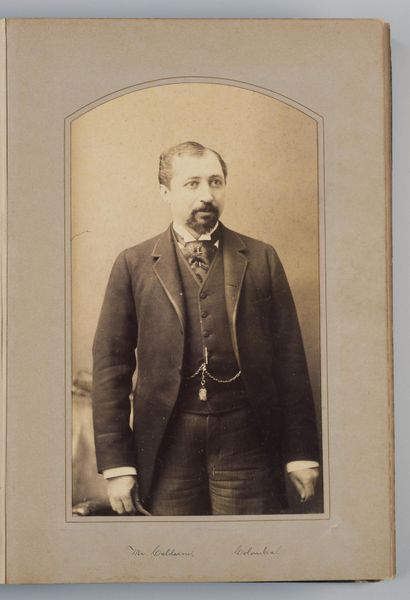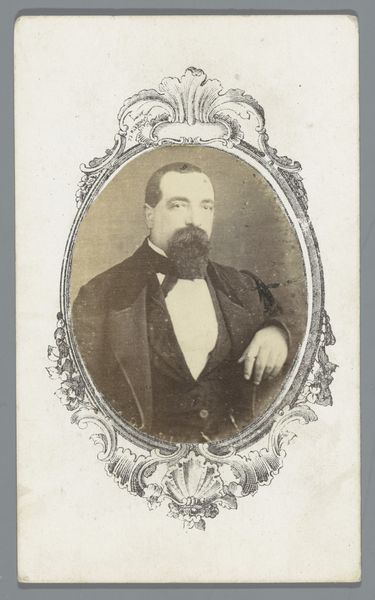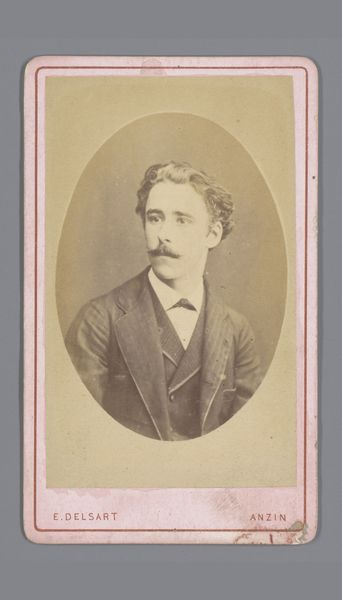
#
aged paper
#
vintage
#
photo restoration
#
historical photography
#
portrait reference
#
unrealistic statue
#
framed image
#
19th century
#
advertising for male clothe
#
fine art portrait
Dimensions: height 105 mm, width 64 mm
Copyright: Rijks Museum: Open Domain
Curator: Looking at this image, I immediately sense a quiet reserve. It’s quite striking how the monochrome palette and soft focus create such a dignified and timeless aura. Editor: Indeed. We’re looking at a piece titled "Portret van een onbekende man", attributed to E. Marchandise and estimated to have been created sometime between 1891 and 1910. As a photographic portrait from the late 19th century, it presents an opportunity to reflect on identity, class, and the visual conventions of that era. I wonder who this man was, what role did the photographic studio play in shaping social perceptions and reinforcing bourgeois identity through carefully curated images. Curator: Well, observe the way light models the planes of his face, how the sepia tones imbue everything with warmth and depth. The gentleman’s carefully styled hair and trimmed beard point to meticulousness; a subtle detail. Note also how his suit is carefully tailored; altogether it provides this visual richness. It transcends the immediate goal of being a "portrait". Editor: It is definitely striking, but I am critical of the rigid performativity that went into its production and circulation as cultural capital. The bourgeois were so careful about self-presentation. We are meant to focus on an air of respectability; the image strategically obscures class divides that this very person actively contributed to reinforcing at the time. We can consider Roland Barthes here. The “studium” is clearly communicated to viewers but to what end, really? Curator: I understand your reading, but perhaps we could also consider it as a document of its time. It captures an aesthetic preference for soft, flattering light and a certain level of formality, offering us insights into the artistic ideals of the period. Editor: Undoubtedly so, and thinking about its function as a carte-de-visite makes one consider how these images acted as vectors of identity, gender, and social status across the late 19th-century. What type of interpersonal relations were facilitated or shut down? Curator: Regardless, analyzing the photograph’s tonality and its delicate contrasts is valuable from an aesthetic perspective, highlighting how a singular medium can be imbued with distinct emotions, whether through a contemporary or present-day lens. Editor: Absolutely. Deconstructing this portrait unveils how constructed identity always intersects with visual regimes of power that are continuously renegotiated to our own present day.
Comments
No comments
Be the first to comment and join the conversation on the ultimate creative platform.
